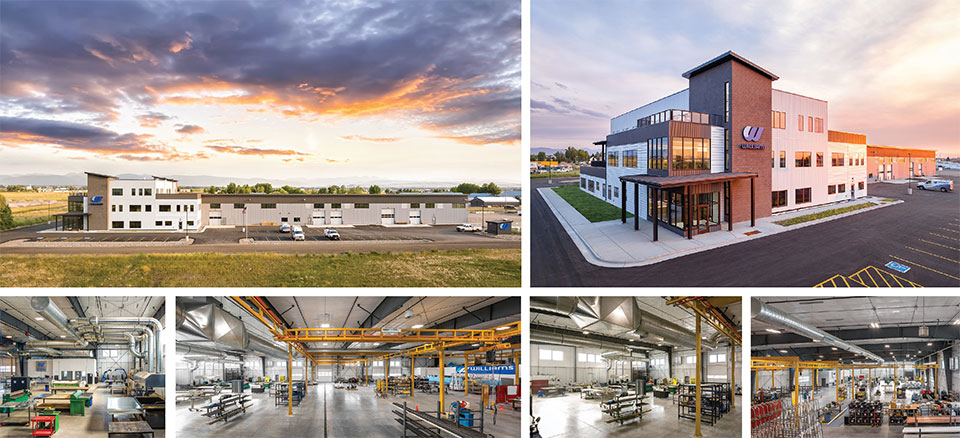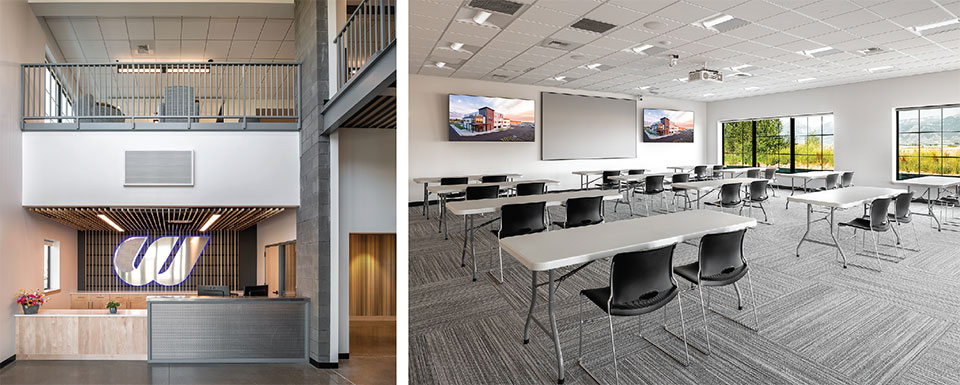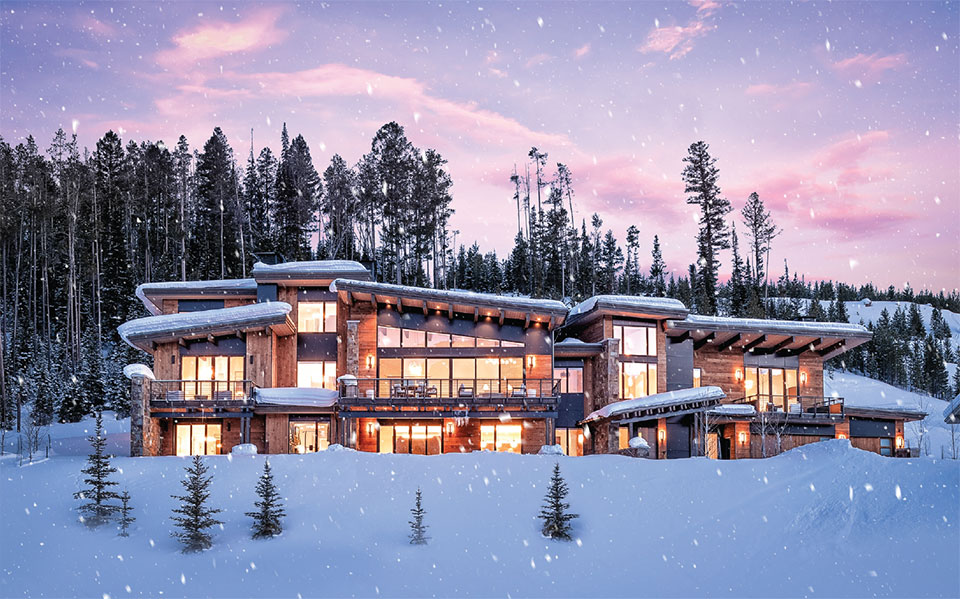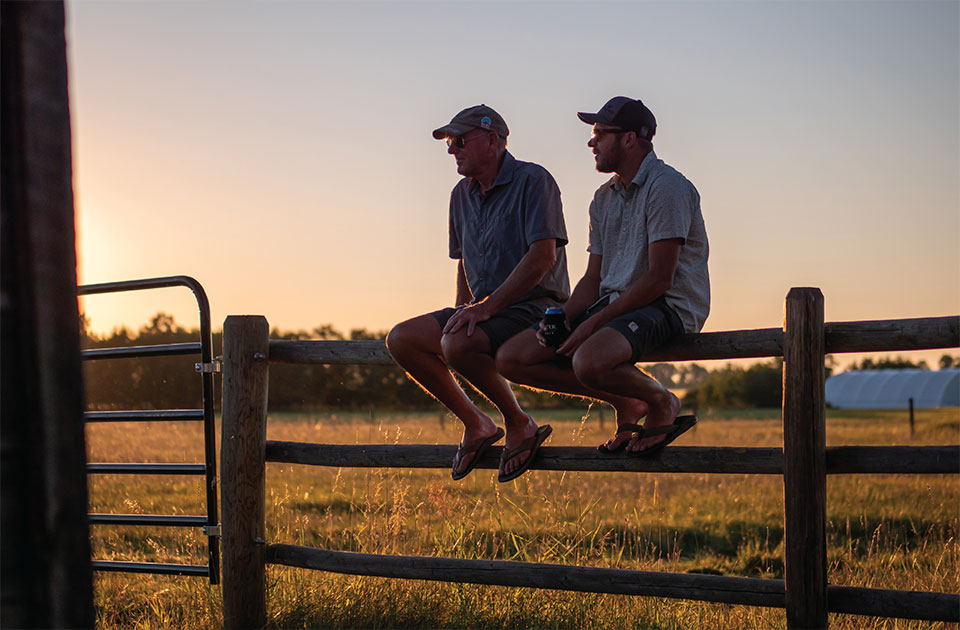The Future of Plumbing
Is Right Here in the Gallatin Valley
by Peter Briccetti
Ken Williams founded Williams Plumbing and Heating in 1979, with just a single employee: himself.
Plumbing isn’t an easy business to revolutionize. Historically, the construction industry has been slow to adopt new technologies and innovate compared to other sectors. While other industries have been transformed by breakthroughs in data analytics, AI, and the Internet of Things, the construction sector has been hesitant, in many cases, to embrace these advances. As a result, it has missed opportunities for improved productivity, sustainability, and worker safety.
However, this is not the case with Williams Plumbing and Heating, a staple of the Gallatin Valley for more than four decades. The company has been extremely successful integrating advanced tools and software so their construction projects can be better visualized, planned, and managed, reducing errors and unexpected costs. Working on some of the largest projects in the state of Montana, while also being one of the state’s largest employers, Williams is a truly forward-thinking company, dead-set on modernizing the old-school stereotype of the industry.
Williams recently completed construction on a brand-new flagship facility off Jackrabbit Lane, roughly halfway between Four Corners and Belgrade. Combining a high-tech fabrication facility with engineering workstations, team gathering rooms, and an in-house learning center, Williams’ new headquarters is truly a state-of-the-art plumbing and fabrication facility. Walking through the spotless halls, you’ll notice full conference rooms, engineers editing three-dimensional construction models, and master fabricators operating robotic welders and plasma tables. The entire facility is run on a cutting-edge, renewable geothermal energy system that controls the temperature of the building with the heat of the Earth 300 feet below its foundation. It’s not your grandfather’s plumbing facility.
But before all of this, Williams actually began life as a more classic plumbing company, albeit an exceptional one.

The History of Williams
Ken Williams founded Williams Plumbing and Heating in 1979, with just a single employee: himself. He wanted to provide residents of the Gallatin Valley and beyond with quality plumbing and heating services, while retaining an emphasis on relationship-building with clients.
By 1981, Ken had grown the fledgling business to a four-man team, with a small compound containing an office and workspace in Bozeman’s Cannery District, and a few brown Datsun pickups.
While Williams Plumbing and Heating started working solely in the residential sphere, they expanded quite quickly, incorporating in 1984. Over the next few years those nondescript Datsun pickups became instantly recognizable in the area. By the early 1990s, Williams was getting a lot of demand for commercial-scale projects, leading Ken to begin forming the necessary elements for a commercial division of the business.
By the early 2000s, Williams had become one of the largest companies in the Gallatin Valley. But the real legacy of Ken’s company wasn’t just about growth in good times. Williams Plumbing soon got plenty of opportunities to prove their commitment to their community and their care for their employees.
While the Great Recession of 2008 was tough for everyone, it was especially bad for the artisan contractors and the building market. As the recession took hold, many homeowners and businesses faced severe financial constraints, leading to reduced demand for plumbing and heating services. Developments were put on hold, and consumers were tightening their belts, leading to a significant drop in new projects.

Williams’ earlier decision to double-down on commercial projects suddenly paid off more than they could ever have dreamed. While other businesses were laying off their employees en masse, Williams uncovered an opportunity to support an oil and natural gas boom in North Dakota and expanded their geographic footprint.
Before long, they had 45 full-time employees based out of Williston, North Dakota, one of the epicenters of the Bakken Boom. Current employees at Williams credit the salvation of the company to this quick pivot, along with all the jobs that Ken was able to save.
“Ken was able to pull us all through with pure grit,” says Mark Watkins, Director of Sales at Williams. “He has always felt that his primary responsibility is to his employees and their families. If the company hadn’t made it, a whole lot of people in our community would have had a much harder time of it.”
Having ridden out the intense economic instability of the Great Recession, Ken and his team felt strong. “If we could weather that, we could weather just about anything,” as Mark remembers. As it turned out, they wouldn’t have to wait too long for another opportunity to prove their loyalty to their employees.

“Ken was able to pull us all through with pure grit. He has always felt that his primary responsibility is to his employees and their families. If the company hadn’t made it, a whole lot of people in our community would have had a much harder time of it.”
–Mark Watkins, Director of Sales, Williams Plumbing and Heating
The COVID-19 pandemic brought with it an entirely new set of challenges. Right from the beginning, Ken and his son, Quin, the current President & CEO of Williams, committed to significant investment for the safety of the employees, while also ensuring that the company could continue to function. Williams employees were designated as ‘essential workers,’ meaning that their services were needed for the daily life of their community to function, and were a major part of the emergency expansion of hospital capacity around the state.
Being essential workers meant that Williams employees could continue to work, but Ken and Quin knew that they had a responsibility to make sure that their employees were also safe. So, they sat down and wrote a COVID response plan that was so well designed that it was later adopted by the Montana Contractors Association. They required their employees to limit contact to a single partner of their choosing as much as they possibly could, in order to slow the spread of infection through the company. They developed an app for contact tracing and instituted mandatory daily meetings of management for each project site, to continuously monitor conditions on the ground. Then, they bought “an ungodly number of used pickup trucks” to allow each two-man team to drive to the sites without cross-contamination.
The twin challenges of the Great Recession and the COVID-19 pandemic built Williams into the company that it is today. But Williams’ success has also come from great business direction choices that have led them to the cutting-edge of plumbing, HVAC, engineering, and civil construction. They’ve adopted a new project delivery method known as “Design-Build” complemented by off-site fabrication.

Williams is able to fabricate entire mechanical rooms for large projects (commonly known as Mechpods) at their headquarters, allowing a crane to later drop the finished modular room into the building, all ready to be hooked up and turned on. This workflow greatly reduces construction delays.
Williams believes in a more cohesive approach to construction, seamlessly integrating design and construction processes under a single contract and entity. This method streamlines project timelines, as the collaboration begins from the onset, reducing the chances of design alterations during the construction phase.
This novel way of organizing, fabricating, and completing projects replaces the traditional workflow philosophy of “Design, Bid, Build.” By sharing information across departments, Williams utilizes the feedback from their field team to close the gap between design and construction. The goal is to make the installation go as smoothly as possible, so they not only design with fabrication in mind, but also provide more detailed drawings that help to reduce the work of the contractor. When you see their drawings, you see the difference. Once design and coordination are complete, all the parts are fabricated in their new headquarters facility. Quin compares this process to “designing and then fabricating a LEGO set.”
First, engineers design the system and model the component parts virtually. Once the model is coordinated with other trades, it is split into assemblies and formatted into individual spools (similar to a single page of Lego® instructions). Then, the digital instructions are sent to the equipment and their fabricators turn raw materials into custom-made parts, folding sheets of metal into entire HVAC systems, cutting PVC piping to exact specifications, and welding steel into complex shapes. The pieces for each project are staged together, and then shipped off to the worksite. This means that when Williams sends a team out to install on a project, all of the components that they need to complete that project are fabricated, organized, and prepped to go into the building before they even set foot on the worksite.
This approach saves a tremendous amount of time and avoids some of the most common delay-causing problems in construction such as inclement weather, quality control, supply chain issues, lack of stock, and component part assembly. They’re even able to fabricate entire mechanical rooms for large projects (commonly known as Mechpods) at their headquarters, allowing a crane to later drop the finished modular room into the building, all ready to be hooked up and turned on. This workflow greatly reduces construction delays.

Williams is able to fabricate entire mechanical rooms for large projects (commonly known as Mechpods) at their headquarters, allowing a crane to later drop the finished modular room into the building, all ready to be hooked up and turned on. This workflow greatly reduces construction delays.
On the civil construction side, when Williams takes on a project, they scan the future building site with LIDAR-enabled drones that create a virtual map of the landscape. This eliminates the need for extensive surveying, and allows their team to plan the entire project from their computers back at headquarters. Once the project is planned, that virtual model is loaded into their heavy equipment where the automated machine control builds it to exact specs.
Incorporating innovation and high-tech solutions into the construction industry is not only just good for productivity and business. It’s also great for encouraging new talent to join the field. The real-life engineers building complex 3D models at Williams’ headquarters are a far cry away from our dated stereotype of a plumber.
Williams focuses on advocating for future generations of plumbers to take up the mantle. They’ve created the Williams Academy in order to train their employees and teach students construction courses. They have strong relationships with local high schools and middle schools to promote the careers of plumbing, construction, and fabrication to kids considering their career choices.
Williams has been incredibly successful at scaling their business and thriving throughout the biggest downturns in the last 50 years. They are leading the field with their “Design-Build” and off-site manufacturing workflows, while also coordinating with partners to get plumbing, HVAC, and hydronics done in days instead of months. But all of these successes wouldn’t have been possible if Williams Plumbing and Heating hadn’t been built on such a solid foundation. This company has deep roots in the Gallatin Valley, and it shows in their attention to detail, commitment to their employees, and innovative attitude. They understand that their revolution is our revolution, and that employees are the beating heart of any great business.

